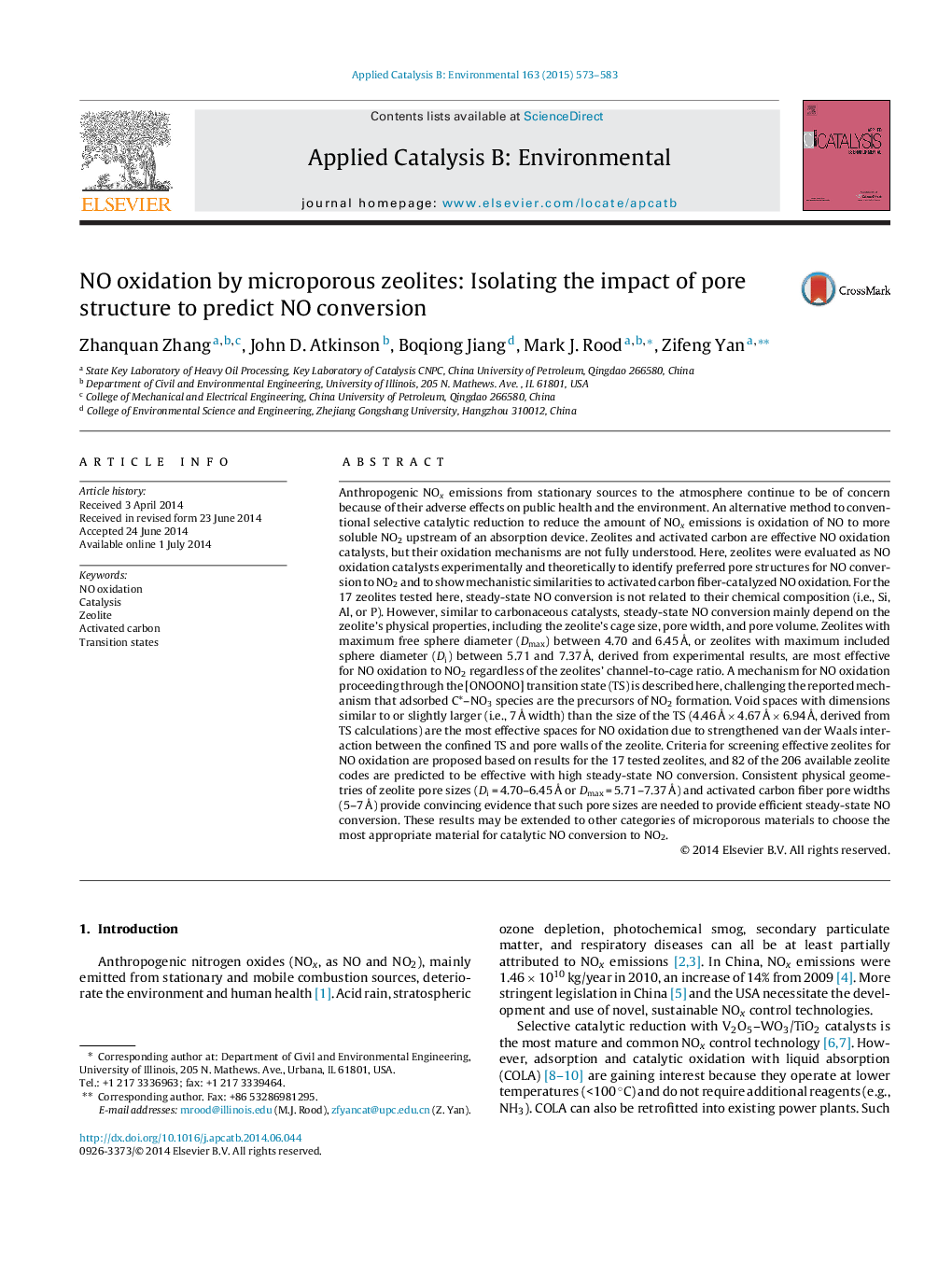| کد مقاله | کد نشریه | سال انتشار | مقاله انگلیسی | نسخه تمام متن |
|---|---|---|---|---|
| 44911 | 46375 | 2015 | 11 صفحه PDF | دانلود رایگان |

• Steady-state NO oxidation (SS-NO) is most effective in void spaces from 4.67 to 6.94 Å.
• SS-NO oxidation is proposed to occur through the [ONOONO] transition state (TS).
• TS confinement in appropriate micropores catalyzes SS-NO in carbon and zeolites.
• Eighty-two frameworks are proposed to be most effective for SS-NO.
Anthropogenic NOx emissions from stationary sources to the atmosphere continue to be of concern because of their adverse effects on public health and the environment. An alternative method to conventional selective catalytic reduction to reduce the amount of NOx emissions is oxidation of NO to more soluble NO2 upstream of an absorption device. Zeolites and activated carbon are effective NO oxidation catalysts, but their oxidation mechanisms are not fully understood. Here, zeolites were evaluated as NO oxidation catalysts experimentally and theoretically to identify preferred pore structures for NO conversion to NO2 and to show mechanistic similarities to activated carbon fiber-catalyzed NO oxidation. For the 17 zeolites tested here, steady-state NO conversion is not related to their chemical composition (i.e., Si, Al, or P). However, similar to carbonaceous catalysts, steady-state NO conversion mainly depend on the zeolite's physical properties, including the zeolite's cage size, pore width, and pore volume. Zeolites with maximum free sphere diameter (Dmax) between 4.70 and 6.45 Å, or zeolites with maximum included sphere diameter (Di) between 5.71 and 7.37 Å, derived from experimental results, are most effective for NO oxidation to NO2 regardless of the zeolites’ channel-to-cage ratio. A mechanism for NO oxidation proceeding through the [ONOONO] transition state (TS) is described here, challenging the reported mechanism that adsorbed C*–NO3 species are the precursors of NO2 formation. Void spaces with dimensions similar to or slightly larger (i.e., 7 Å width) than the size of the TS (4.46 Å × 4.67 Å × 6.94 Å, derived from TS calculations) are the most effective spaces for NO oxidation due to strengthened van der Waals interaction between the confined TS and pore walls of the zeolite. Criteria for screening effective zeolites for NO oxidation are proposed based on results for the 17 tested zeolites, and 82 of the 206 available zeolite codes are predicted to be effective with high steady-state NO conversion. Consistent physical geometries of zeolite pore sizes (Di = 4.70–6.45 Å or Dmax = 5.71–7.37 Å) and activated carbon fiber pore widths (5–7 Å) provide convincing evidence that such pore sizes are needed to provide efficient steady-state NO conversion. These results may be extended to other categories of microporous materials to choose the most appropriate material for catalytic NO conversion to NO2.
Figure optionsDownload as PowerPoint slide
Journal: Applied Catalysis B: Environmental - Volume 163, February 2015, Pages 573–583